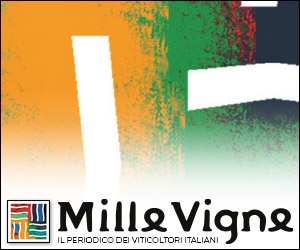(Lorenzo Biscontin)
Last Monday, Valoritalia’s Annual Report 2025 was presented in Rome, where the results of the activity carried out in the previous year by the main certification body for Italian wines are collected.
Valoritalia in fact operates with 35 offices present throughout the national territory, with a prevalence in the center-north of Italy, through which it certifies 48 of the 77 Italian DOCGs, 136 of the 330 DOCs and 35 of the 119 IGTs.
Even more significant is the economic weight of the DOs certified by Valoritalia, which represent 53% of the value at cellar prices of all Italian DOCGs, DOCs and IGTs.
Valoritalia therefore represents a privileged observatory to look at the trend of Italian wine production on the basis of a huge amount of data that describe production, bottling and stocks in both quantitative and qualitative terms.
The Annual Report 2025, downloadable from Valoritalia website, is therefore an unvaluable source of objective information in which confirmations are found regarding the situation of the sector, but, above all, surprises emerge that deny some consolidated clichés.
Let’s start with the confirmations:
1. The fragmentation of the industry: the volumes bottled by the top 4 appellations represent 57.44% of the total certified by Valoritalia, the top 8 sum up to 68.36% and the top 20 to 85.99%. The last 139 appellations instead represent only 1.41%. During the conference to present the report, the President of Valoritalia, Francesco Liantonio, recalled how there are also appellations for which no production is claimed. An increasingly unsustainable situation, especially for the operations of Consortia, that these denominations must protect and enhance and whose role in terms of governance, sustainability and food and wine tourism has been strengthened by the recent European reform of DOP and IGP. To be effective, Consortia need economic and personnel resources: for this reason an aggregation process that would reduce the number of Consortia, grouping several neighboring denominations within a single Consortium, has been hoped for.
2. The decline in consumption of red wines: in 2024, the production of DOs with a partial or total prevalence of red wines showed a decline of 6.8%.
3. The continued growth of white sparkling wines: Prosecco DOC is not only the largest Italian DO, with 659,789,755 bottles certified in 2024, but it continues its growth, recording a +7% compared to the previous year. Significant growth were recorded also for Asolo Prosecco DOCG (+50%) and Alta Langa (+9.1%).
The surprises, however, are obviously the ones that strike the most:
1. 2024 was a year of consolidation for the Italian wine sector: overall, the bottles certified by Valoritalia were 2,019,000,000, only 0.46% less than in 2023. And above all, almost 110,000,000 more bottles than in 2019, i.e. the last pre-COVID year and since then the record year.
2. The alcohol content of Italian wines is decreasing: as Giuseppe Liberatore, General Manager of Valoritalia, pointed out, this is a totally unexpected figure in the face of the increase in average temperatures due to climate change. Yet the analyses of a very high number of samples (from 28,000 to 45,000 depending on the vintage) are indisputable. For the main DOs in the decade 2014-2023 the average alcohol content of red wines went from 13.98% to 13.50%, for still whites from 13.72% to 12.79% and for sparkling wines from 12.31% to 11.12%. At the same time, for red wines the standard deviation of the average alcohol content data increased, indicating the widening of the range in which the individual samples are placed. This data could indicate the different choices of cellars regarding the alcohol content and therefore the different management of the processes in the vineyard and in the cellar.
The event ended with the presentation of a research on the value of certifications in wine, comparing the attitude of the Italian consumer with the Canadian one, by Denis Pantini of Nomisma. The relevance and interest of the information presented deserves a dedicated article, which we will publish shortly.
Before concluding this article, I would like to thank Valoritalia for sharing the information they collect with their certification activity. This data allows us to have an objective picture of the situation in the wine sector, on which to base the development of new strategies both at company and supply chain level.
It would be desirable for this to happen more frequently and, above all, for it to also be done by the companies that certify the other 47% of Italian DOs, to have a complete national vision of the scenario.



